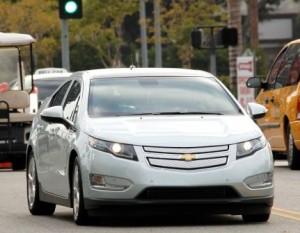General Motors will spend $336 million in the Detroit-Hamtramck assembly plant to begin production of the Chevrolet Volt electric car late in 2010, as well as the Opel Ampera, which will follow late in 2011.
This brings GM’s combined Volt-related investments in Michigan to $700 million spread over eight locations, according to the company.
Detroit-Hamtramck will be the final assembly location for the Chevrolet Volt and Opel Ampera, using tooling from Grand Blanc, lithium-ion batteries from GM’s Brownstown Township battery pack manufacturing facility, camshafts and connecting rods from Bay City, as well as stampings and the Volt’s 1.4-liter engine-generator from Flint.
“We expect the Detroit-Hamtramck plant will be the first facility in the U.S. owned by a major automaker to produce an electric car. It is the hub for the wheel that we began rolling in 2007 when the Volt debuted at the North American International Auto Show in Detroit,” said Jon Lauckner, GM vice president of global product planning. [Well, GM’s ill fated EV1 was produced in Lansing.]
“Since then, the field of challengers and partners has grown significantly. This competition will expedite the development of electric vehicle technology and infrastructure,” Lauckner added.
Detroit-Hamtramck opened in 1985, and currently employs about 1,200 workers, including 1,100 hourly workers represented by UAW Local 22. Shortly after the launch of Volt production, late next year, GM will pull the existing models out of the facility, often referred to as the Poletown Plant. A year later, the factory may serve as a production source for the Chevy Malibu.
But Lauckner told TheDetroitBureau.com, in a private interview, that “We have other (electric) vehicles beyond Volt we’ll build in this plant.” The planning executive declined to discuss specifics, though he acknowledged GM is looking at several additional models based off the Volt’s E-REV platform, including the Cadillac Converj. A prototype of the Caddy battery car received rave reviews when it was unveiled at last January’s Detroit Auto Show.
Asked how much GM has so far spent on the Volt and related efforts, Lauckner said “the total is somwhat over $1 billion,” but he rejected as “incorrect” reports suggesting the program is over budget. “I’m not aware,” he stressed, “that this program is over budget, at all.”
But the GM executive did acknowledge that the company has expanded the scope of the broad Volt program. Among other things, it has decided to produce its own lithium-ion batteries, as part of a joint venture with Korea’s LG Chem. And GM is developing in-house development and production capabilities for the electronic control modules, motors and other systems essential to such vehicles. These are “core competencies,” much like the gasoline engine systems used in conventional automobiles, said Lauckner, and critical to GM’s ability to differentiate itself from the competition.
During a speech at the Los Angeles Auto Show, last week, GM Vice Chairman Bob Lutz noted the troubled automaker is evolving from “a company that makes mechanically-driven automobiles into one that produces vehicles driven by electric propulsion.”
Paul A. Eisenstein contributed to this story.


I’ve never been a big GM fan, especially their management. But I give them credit for this: a high-tech mainstream electric car designed and made in America by (unionized) Americans. Well done. I hope they sell a lot of them and create a wide range of vehicles based on the technology.
Have you noticed that it is no longer a plug in hybrid? Now it is an electric car with a back up generator.
I guess they needed to be different now that other folks have plug in hybrids.
Harry: There was much to-‘n-fro inside GM on how to describe Volt. Some argued that the EV1 disaster precluded electric vehicle, so various other terms have been used. Now, GM seems to have settled on “extended range EV.” That’s about right, too. It is in concept just an EV1 with a large 1.4-liter engine/alternator to recharge the batteries when they go flat after 40 miles. EV’s comeback as a term at GM was helped, no doubt in my mind, when it became clear that huge taxpayer subsidies would become available.